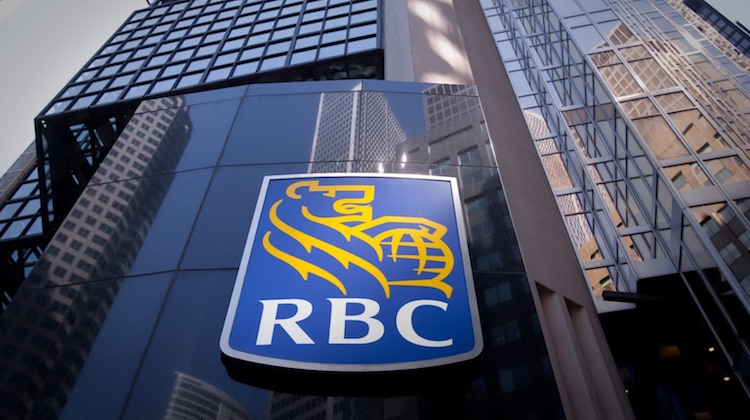Cheatsheet: What to know about Prime Reload, Amazon’s latest rewards program
How Payoff is shifting the conversation about consumer debt to financial wellness
Scott Saunders is CEO and Founder of Payoff
What is Payoff?

Payoff is a leading financial wellness and empowerment company leveraging technology, science and personalization. We are working to change the status quo in consumer finance and help people cross the chasm from borrowers to savers, investors, and givers. We’re excited to have support and significant industry leadership from our impressive Board of Directors, including: Joe Saunders (former Visa CEO), Arianna Huffington (Huffington Post Founder), Mohamed El-Erian (former Pimco CEO), Sean Park (Anthemis Group Founder) and Jim Lane (former Goldman Sachs partner).
Why do you believe it’s a “next generation financial company”?
By taking a more personal and holistic wellness approach to their finances with Payoff, our Members gain insights to connect their behaviors, feelings and aspirations to an empowered path forward. For example, at Payoff we:
- Use science to empower our Members: Our Chief Scientist, Dr. Galen Buckwalter, helped to develop the matching algorithms at eHarmony as their Chief Scientist Officer, and he’s bringing psychology to finance, ultimately facilitating positive behavior change and helping people make better financial decisions. Payoff has taken the hundreds of questions you might answer in a typical psychometric assessment and compressed them into a three-minute “gamified” online version that gauges your financial personality. Our assessment provides insights into “why” you spend vs. just focusing on “what” you spend (information you can already get from traditional credit reports).
- Treat underwriting like a first date: Payoff doesn’t want to issue multiple loans to one person. Instead we want to understand people’s levels of motivation to really pay off their debt. As a result, Payoff has a significantly lower default rate than the industry average of 4%-5%. We’re also actively researching and building resources and tools to support motivated Members who don’t currently qualify for a Payoff Loan.
- Offer Member Advocates: Based in Payoff’s Costa Mesa, Calif., headquarters, our Member Advocates provide personal support, guidance and a listening ear to our Members via a call, email or online chat. 86% of Payoff Members have opted in for 90-day check-ins following the initial welcome call from their Member Advocate.
- Are the first marketplace lender to provide Members with free FICO® Score updates: Starting this month, Payoff will provide Members with complimentary monthly access to their FICO® Score (which are used in more than 90% of lending decisions in the U.S.). Members will see trending information impacting their score and educational resources. In a recent study, Members who paid off $5,000 in credit card balances using a Payoff Loan saw an average increase in their FICO® Score of 40 points.
- Are a growing community: With a Net Promoter Score (NPS) of 80, Payoff Members are showing their desire to join our financial wellness movement and help us continue to build an even better and growing community. Payoff has been very positively reviewed within the industry’s leading sites, such as Magnify Money (A+ Transparency Score), NerdWallet (Best Customer Experience), ekomi (4.8 out of 5 stars), CreditKarma and the Better Business Bureau.
What is the biggest challenge you’re finding growing a company in consumer finance?
Breaking the status quo. Financial wellness is a new concept. The status quo is delivering traditional financial products and services that don’t help customers achieve success. At Payoff, we put our Members first and have their best interests at heart. We meet them where they are today, take the time to listen and understand them, and develop products and services that support their needs. For example, we focus on their most costly problem today – past credit card debt – and offer a refinance loan to help eliminate it instead of offering multiple loans to encourage new debt. We also offer our complimentary online Lift program that’s a hub of useful financial tools and tips.
How does Payoff balance the friction between “wanting users to become free of debt” vs. building a consumer credit card company that monetizes such debt?
We have a solid foundation and business model designed around the idea that when the customer wins, we win. If it were up to us, we wouldn’t call it a loan, because it’s really their goal to eliminate the credit card balances that they currently have, and we’re partnering with them to achieve that goal. The loan is really just one part of that relationship — and we issue a single loan to Members to pay off their debts, not second and third loans. Along their journey with us, our goal for our Members is to get them on their personal path from borrower to saver, investor and giver, and help them achieve their dreams.
How do you think about distribution? What does your funnel look like?
Our focus is currently on serving the U.S. market. We have an integrated marketing approach that includes direct response with supporting paid ads, social engagement, and direct mail. We’re also building a vibrant community of partners who share our values and want to introduce Payoff and our solutions to their own community members.
What’s in store for Payoff in 2016?
This will be the most exciting year ever in the journey of Payoff. Last year we helped thousands of Americans to begin their paths from borrower to saver as we refinanced credit card debt. We’ve also helped our Members improve their FICO® Scores by an average of 27 points. This year we’ll launch new solutions to help them continue that journey, understand themselves better and develop the level of peace that we should all be able to have with regard to money in our lives. We’ll also continue to innovate and explore opportunities that extend our reach and impact in support of our mission.










